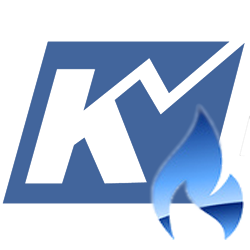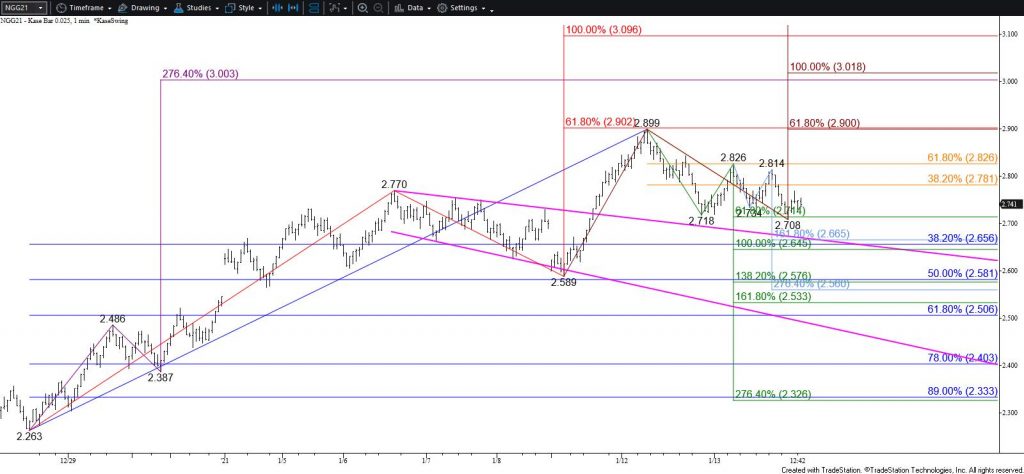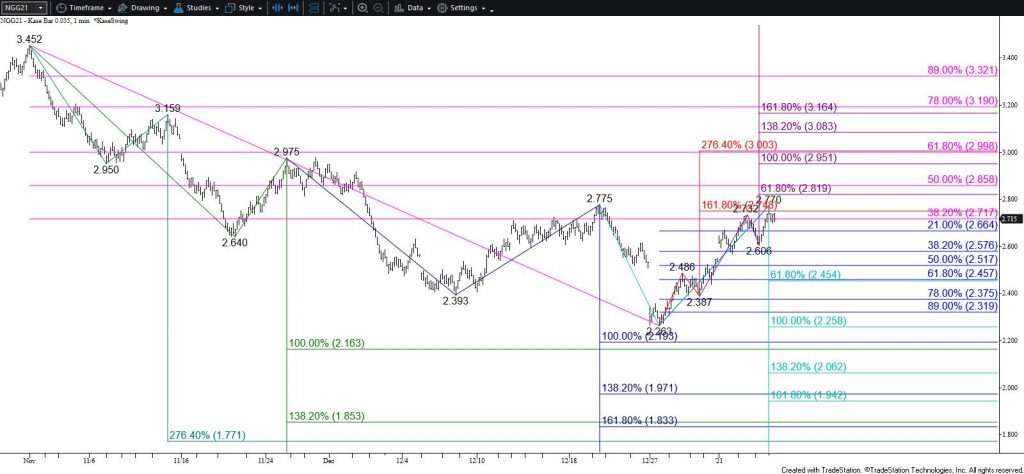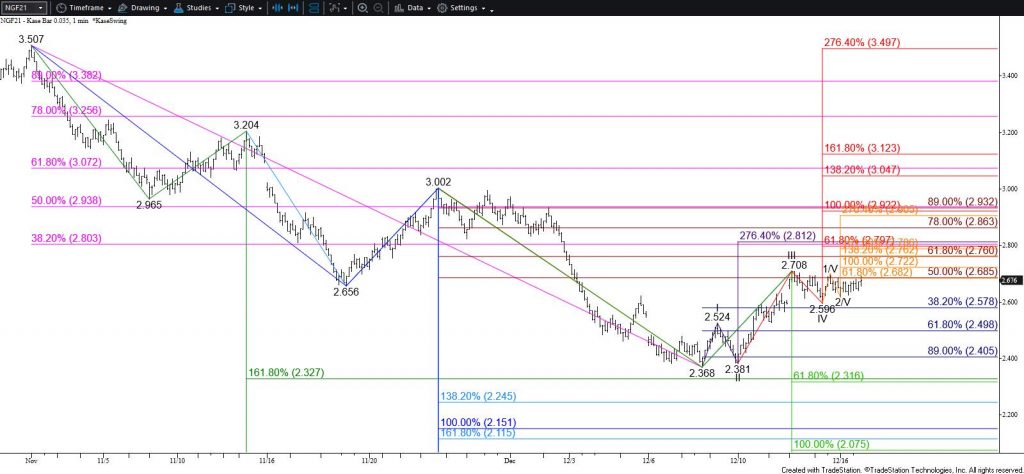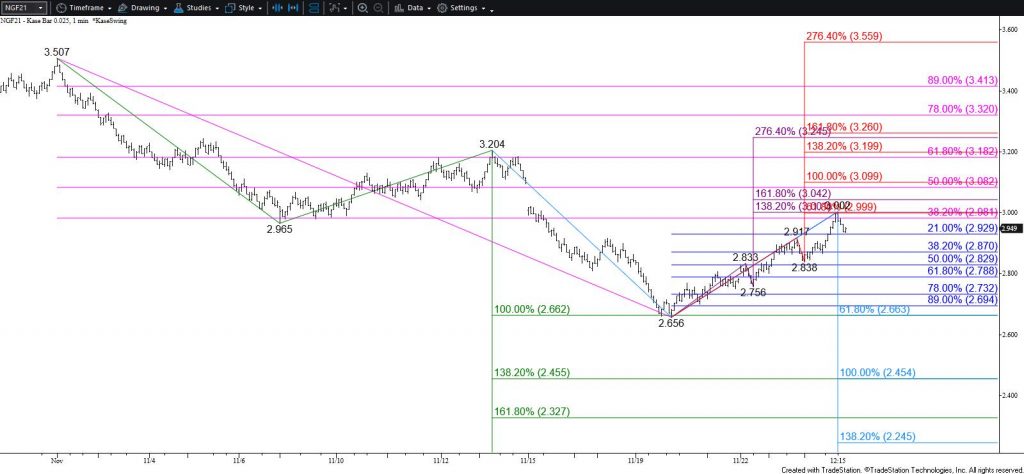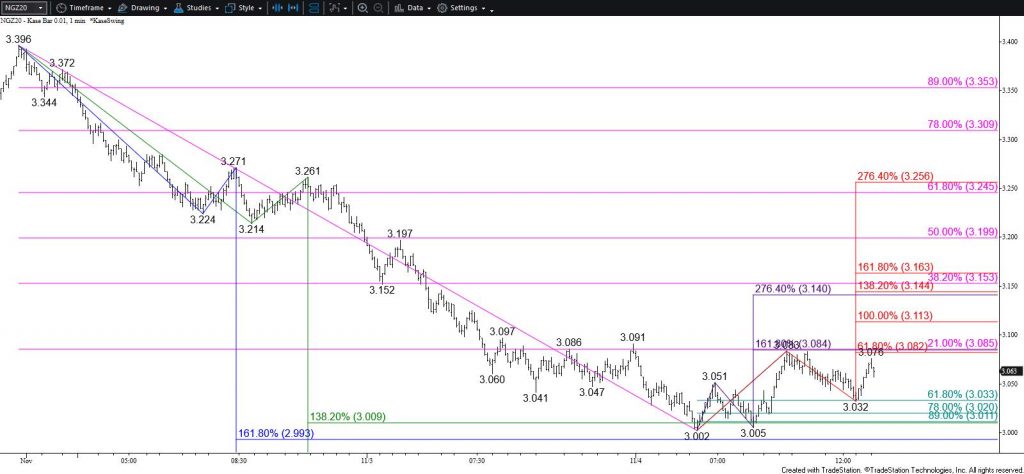Natural Gas Technical Analysis and Near-Term Outlook
Natural gas fell as expected this morning and took out support around $2.51 before stalling at the $2.45 target. Taking out $2.51 was bearish for the outlook because this is the 62 percent retracement of the rise from $2.263. However, $2.51 held on a closing basis and a daily bullish hammer formed. This pattern suggests natural gas will rise to challenge resistance around $2.62 during the next couple of days and that prices might begin to consolidate into a trading range while waiting on more information from supply/demand factors (e.g., weather).
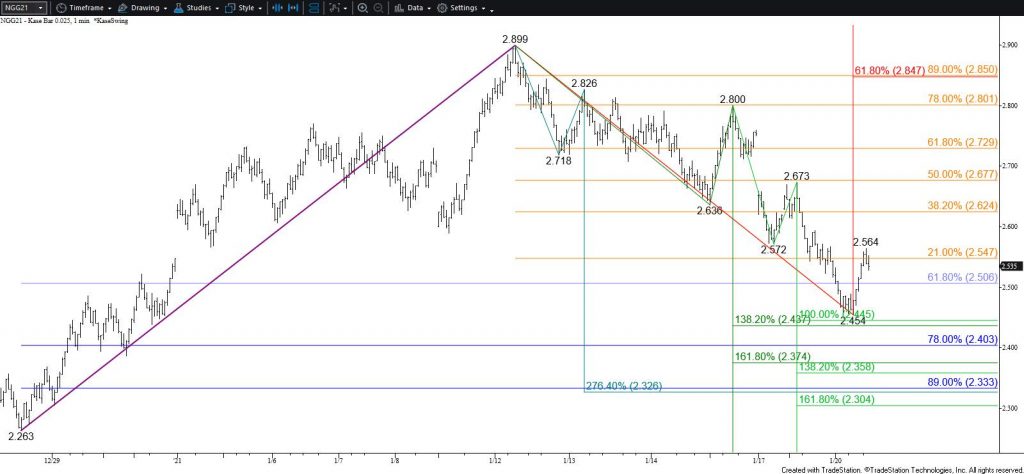
Natural gas might be hard-pressed to overcome $2.62 without a bullish shift in weather or other factors. However, closing above $2.62 will call for $2.67 and possibly $2.73. Settling above $2.73 would reflect a renewed bullish shift in sentiment and call for $2.85, the barrier to a firm bullish outlook.
With that said, a one day move up and unconfirmed hammer pattern is not enough to definitively call for the recent move down to end. Yesterday’s gap down and decline below the $2.589 swing low was a clear bearish shift in recent sentiment. Taking out $2.50 will call for another test of $2.45, a close below which will clear the way for a continued decline.
This is a brief analysis for the next day or so. Our weekly Natural Gas Commentary and daily updates are much more detailed and thorough energy price forecasts that cover key natural gas futures contracts, calendar spreads, the UNG ETF, and several electricity contracts. If you are interested in learning more, please sign up for a complimentary four-week trial.

